Read more in The Viral Inquisitor and other essays on postjournalism and media ecology.
Walter Lippmann begins his 1922 book, Public Opinion, with a story about a small colony of Europeans living on a distant island, where a mail steamer delivered the news only once every 60 days. When the news arrived in September 1914, the colonists learned that, for over six weeks, those among them who were English and French had been at war with those who were Germans. A war had been consuming their home countries, but it would never have touched them if they had not received the news.
Unfortunately, Lippmann does not tell what happened to those people next. Did they turn from friends to enemies? Did they wish they’d been deprived of any news? They might have missed those days when they were still unaware of such bad news, as they were deprived of any news. For them, living without the latest news meant living without war.
Nowadays, what those colonists had by default due to the lack of communication has become the deliberate choice of many. It even has a name: “news avoidance.”
News avoidance reached its peak in 2022, totaling 38% of all people globally and 42% of Americans, according to the 2022 Digital News Report by Reuters Institute.[i] The 2023 Digital News Report finds that globally, people most often avoid news about the war in Ukraine (39%), national politics (38%), social justice issues (31%) and crime (30%).[ii] In the U.S., the structure of selective news avoidance is slightly different, as shown in the chart (Figure 17).
News avoidance in the U.S. according to the 2022 Digital News Report by Reuters Institute.[iii] Image credit: Discourse.
In the U.S., the news people specifically avoid also reflects ideological preferences. Conservatives, for instance, are more likely to avoid news about social justice and climate change (70% and 64% respectively compared to 22% and 12% for liberals), while liberals are more likely to avoid news about crime and business (30% and 25% respectively compared to 14% and 9% for conservatives).
News avoidance: partisan division in the U.S. according to the 2022 Digital News Report by Reuters Institute.[iv] Image credit: Discourse.
The term “news avoidance” first appeared in 1960, clearly coinciding with the TV boom. The next surge in news avoidance was related to the Internet. But news avoidance of the TV era and the early Internet was largely about news fatigue: people started experiencing information overload and therefore stopped watching or reading the news.
The frequency of using the term “news avoidance,” according to Google Books Ngram.
News fatigue can be explained through Marshall McLuhan’s idea of sensory numbness. Electronic media has extended our nervous system to the entire planet. New forms of media have literally broadened our horizons but also opened us up to more stressors. Empathy, an essential element of humans’ collective survival strategy, forces us to be attentive to the news about others, but TV and the Internet deliver too much of it. To protect the mind from informational and empathic overload, our news “receptors” become numb, which in turn results in the desire to avoid news.
If the early Internet oversupplied the amount of news, social media aggravated this overload by ramping up the emotional intensity of information. Since social media encourages engagement by triggering people’s reactions, it heightened emotions and polarization. Legacy media followed suit, as it needed to compete for people’s attention. As a result, regular-news overload has been upgraded to bad-news overload.
Why does bad news dominate so much of mass communication? We habitually blame journalists for all the “doom and gloom,” but the media merely follow our own deep subliminal preferences. The simple truth is that people pay more attention to bad news than to good news. For example, as economists Daniel Kahneman and Amos Tversky show,[v] people prefer not to lose $5 over finding $5. To put it another way, the desire to avoid negative consequences is much stronger than the desire for positive outcomes. This negativity bias represents a survival strategy too and serves as a warning system about potential threats. This is why we instinctively value negative information more than positive information. So, all the “doom and gloom” in the media is based on our subliminal preferences, fostered by evolution.
Nowadays, however, the amalgamation of this negativity bias with the news overload through the Internet and social media has created the perfect storm of global news insanity. The more this storm rages, the more people think the world is going crazy. For instance, they feel that wars, atrocities and catastrophes are occurring at historically high rates. But this is not true; it’s a media effect rather than a historic phenomenon; or rather a historic phenomenon caused by a media effect.
There have always been wars and atrocities, and often they have been much worse than what we’re seeing today. The difference is that the news of today’s wars and atrocities is now delivered directly to each of us on individual screens, involving people personally – even driving some to street rallies and making overseas wars into local incidents, which was simply impossible before news media.
Observing the effect of television, McLuhan posited that the emotional perception of TV replaces the rational detachment typical of print culture. Unlike books, electronic media provoke the “empathic involvement” natural to tribal unity; McLuhan called this effect the “retribalization” of society. McLuhan’s retribalization has merged with the global village and given birth to global tribalism.
Moreover, the expectation of this global tribal reaction provokes even more those who perpetrate atrocities – they benefit from the global empathic reaction. For them, carnage is the medium that is meant to be the message. Global empathic involvement, fostered by electronic and now digital media, makes terrorism more efficient than war – especially for those who have no resources to fight a full-scale war. And the primary medium of violence becomes not a gun but a smartphone. This media effect both “invites” terrorism and saturates the media agenda with violence – in addition to the agonistic tone inherent in social media.[vi]
Not everyone, of course, can withstand the agitation produced by such a media environment. Some lose empathy and become cynical. Others try to fence off their empathy by avoiding bad news and, eventually, the news in general.
Bad-news cycles don’t just put us in a bad mood, they create a psychological issue that threatens to grow into a psychiatric one. Psychologists advise us to remind ourselves that unlike 20 years ago, we are now our own gatekeepers and can control our news consumption. Among the practical tips of media hygiene is turning off news notifications or even all pop-up notifications, limiting our responses on social media, and so on. Since the survival mechanism of attention to negative news itself became a threat, many tips on media hygiene basically lead to news avoidance, adding a clear rationale to what people already feel instinctively.
But what is good for mental health is not so healthy for democracy. News avoidance reduces civic engagement. In the classical liberal view, democracy is based on a well-informed citizenry. Obviously, if 40% of citizens avoid news, many will not be well-informed. By eschewing frustrating news topics, people also avoid discussing them publicly. Thus, news avoidance also leads to a form of self-censorship.
News avoidance obviously harms the news industry. Since negative information is evolutionarily more valuable for humans, the news media are naturally tuned into negativity bias. As the old newspaper saying goes, “If it bleeds, it leads.” But if “it bleeds” too much, it leads to a disaster – both for society and the media.
Meanwhile, people in the news industry have been discussing if it is possible to build a successful media outlet without negativity bias. Most suggestions revolve around different models of “constructive journalism,” “solution journalism,” or “slow journalism.” And indeed, surveys show that people say they would read positive and uplifting news. However, this is what people always say but never do.
A project of “constructive” or “solution” journalism might be lucky enough to secure funding, but it will never garner an audience sufficient to sustain the project itself, not to mention making a social impact. “Solution” journalism might solve the problem of the limited number of journalists through securing philanthropic funding for them, but it cannot resolve the environmental problem of negativity experienced by readers, the industry, and society.
Furthermore, attempts to eradicate negativity from journalism are not just unfeasible – they are inherently wrong. Negativity in the news is as crucial as pain is to the body, signaling important issues. Moreover, just as with pain, it’s not only the negativity but also the volume of negativity that holds meaning. The more people are agitated, the more significant the issue is.
Of course, negativity and mass agitation can be artificially created or stirred up by malicious politicians to advance their careers, by media to drum up business, or by the very design of social media, which is aimed at boosting engagement. Perhaps, it is exactly this “added value” of negativity that drives the audience’s frustration and, ultimately, its news avoidance.
Nevertheless, even this excessive negativity is indicative of what stressors and the means of their delivery agitate society the most. Eliminating this pain will make society unaware of its issues, whether political or communicative. How else can society learn about issues with education, healthcare, the party system, or border security if not just a few, but many are discussing them? The amount of pain – of social frustration caused by the news – matters. It should be sensed by the public and politicians for curative actions to be taken. News avoidance eliminates this source of public awareness.
It turns out that the factors that cause news avoidance simultaneously represent the greatest value of news for society. Is it possible to alleviate pain while preserving its indicative function? Theoretically, this could be a job for AI, when the tools of semantic and sentiment analysis become affordable enough to be repurposed for mass media.
Alleviating the emotional burden for the end user while measuring and indicating the range and structure of societal agitation can be achieved programmatically. Special apps could offer readers the option to regulate their personally bearable level of empathic exposure or receive only a summary of emotional measurements – similar to the summaries of news and public opinion that politicians and business leaders receive from their analysts to gauge the national mood. This way, AI that measures the scale of negativity and the structure of societal agitation would mediate not news itself but agitation induced by news, potentially shielding those who are empathetic and often avoid the news due to emotional overload.
It is hard to say if a significant number of news avoiders would willingly and routinely consume news, emotionally refined by AI, but some might. Instead of media selectively omitting one stressor while amplifying others and thus adding to news frustration even more, such an automated solution would make a user a true gatekeeper – not only for the news but for its emotional impact, too. Of course, it will work only until the algorithms of such emotional mediation are tweaked, too. But this will be the story of media bias of the next level.
Read more in The Viral Inquisitor and other essays on postjournalism and media ecology.
On September 16, I launched a fundraising campaign on Kickstarter for my next book, Counter-Digital Media Literacy. The goal is to raise CA$6,400 in 30 days. The project has already hit 88% of its goal. Join the cause of counter-digital media literacy!
See also books by Andrey Mir:
The Viral Inquisitor and other essays on postjournalism and media ecology (2024)
Digital Future in the Rearview Mirror: Jaspers’ Axial Age and Logan’s Alphabet Effect (2024)
[i] Newman, Nic. (2022, June 15). Overview and key findings of the 2022 Digital News Report. Reuters Institute.
[ii] Newman, Nic. (2023, June 14). Overview and key findings of the 2023 Digital News Report. Reuters Institute.
[iii] Newman, Nic. (2022, June 15). Overview and key findings of the 2022 Digital News Report. Reuters Institute.
[iv] Newman, Nic. (2022, June 15). Overview and key findings of the 2022 Digital News Report. Reuters Institute.
[v] See: Kahneman, Daniel, and Tversky, Amos. (1979). Prospect theory: An analysis of decision under risk. Econometrica, 47(2), pp. 263–291.
[vi] I explored the polarizing effects of new and old media in 2020 Postjournalism and the Death of Newspapers. The Media after Trump: Manufacturing Anger and Polarization.
[vii] News avoidance and why it matters. News Over Noise podcast, News Literacy Initiative, Pennstate.
.png)

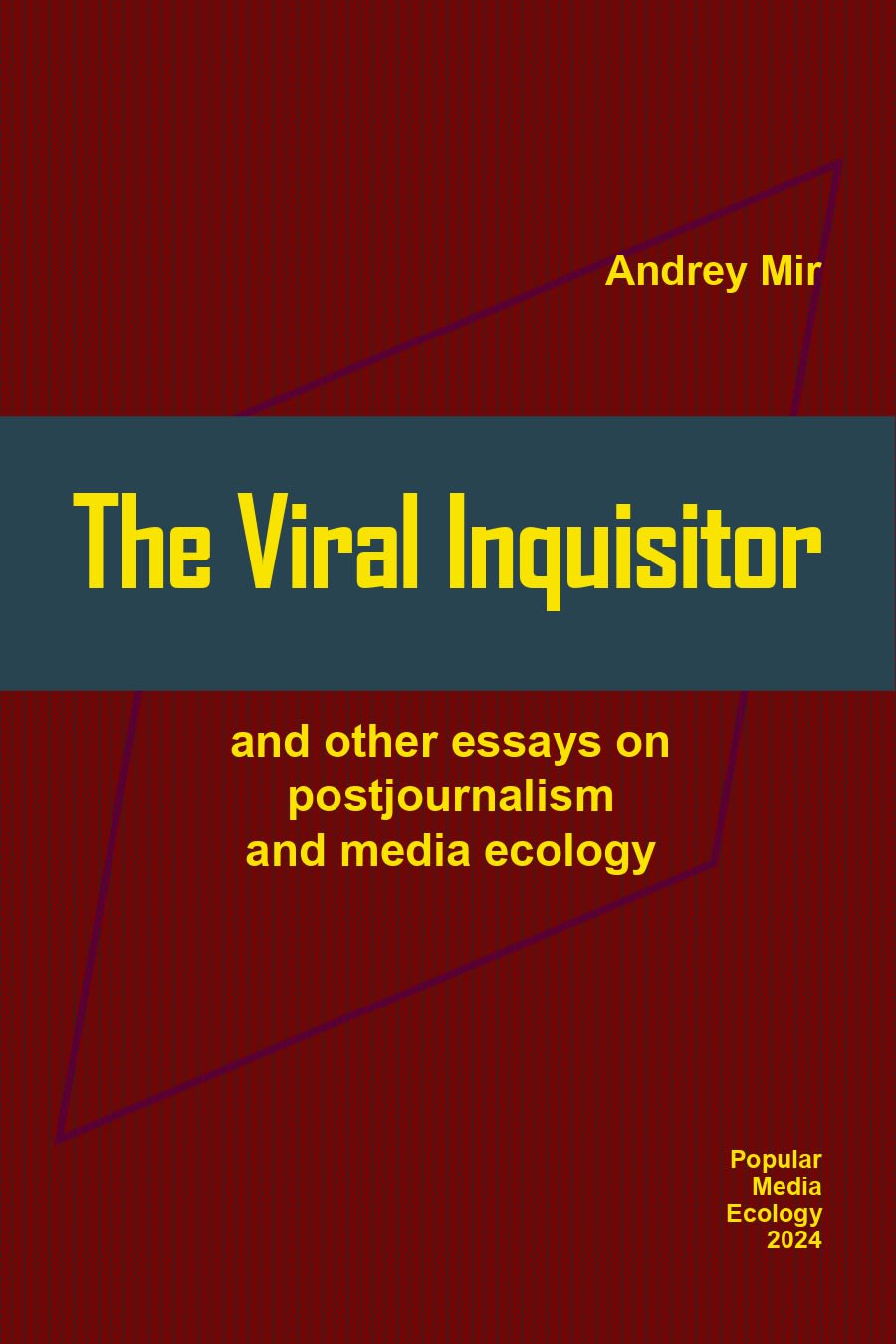
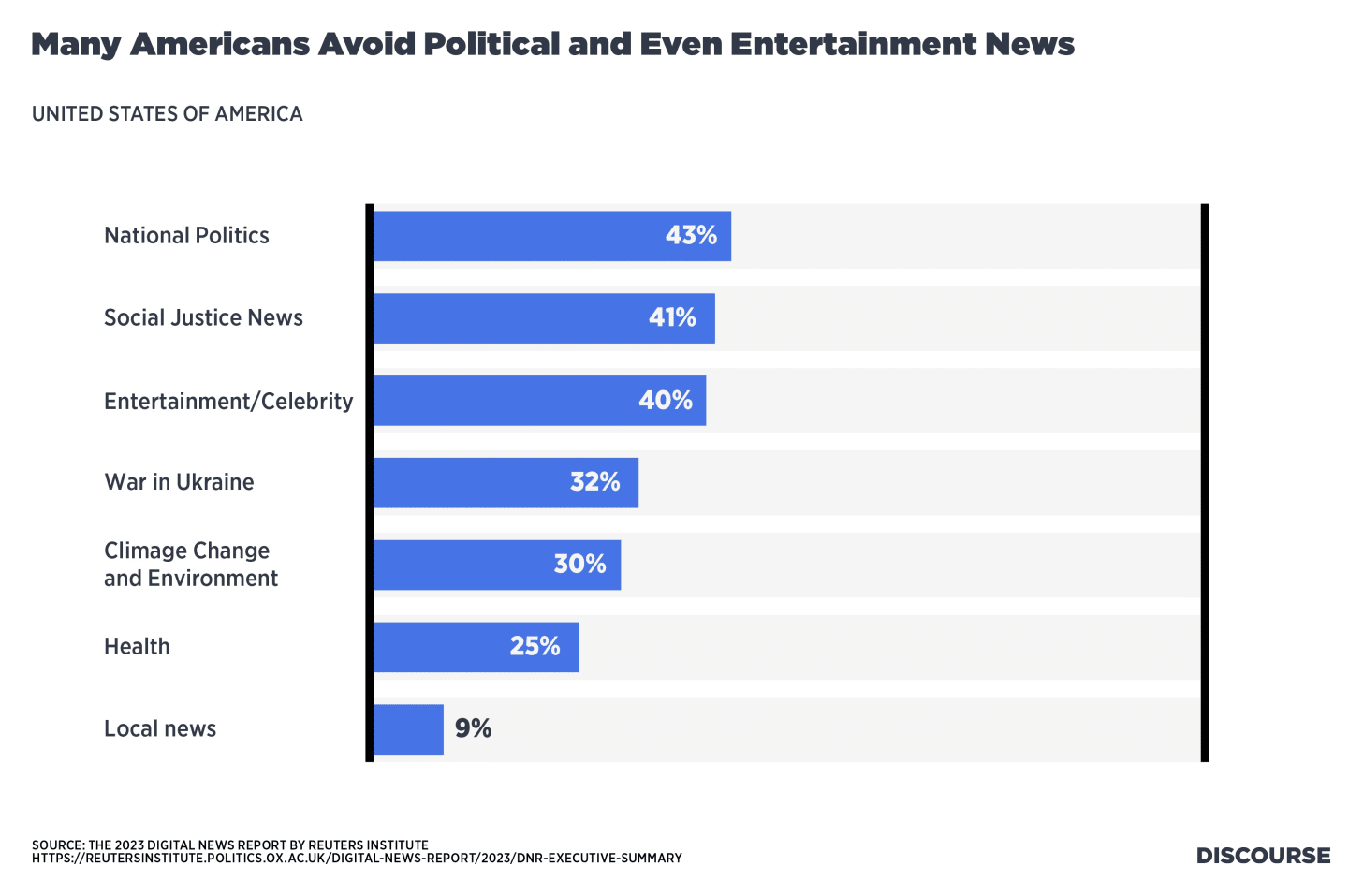
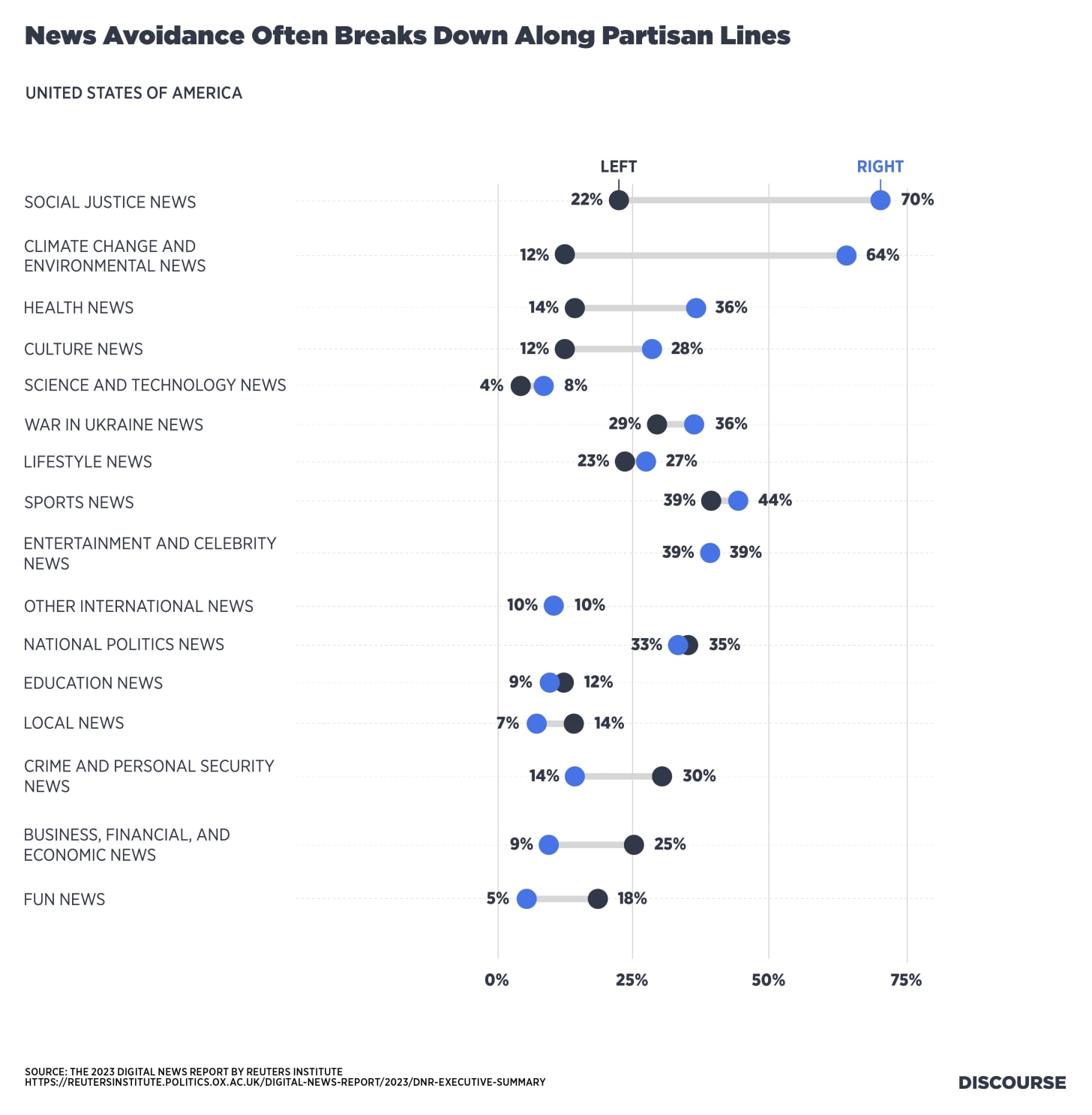
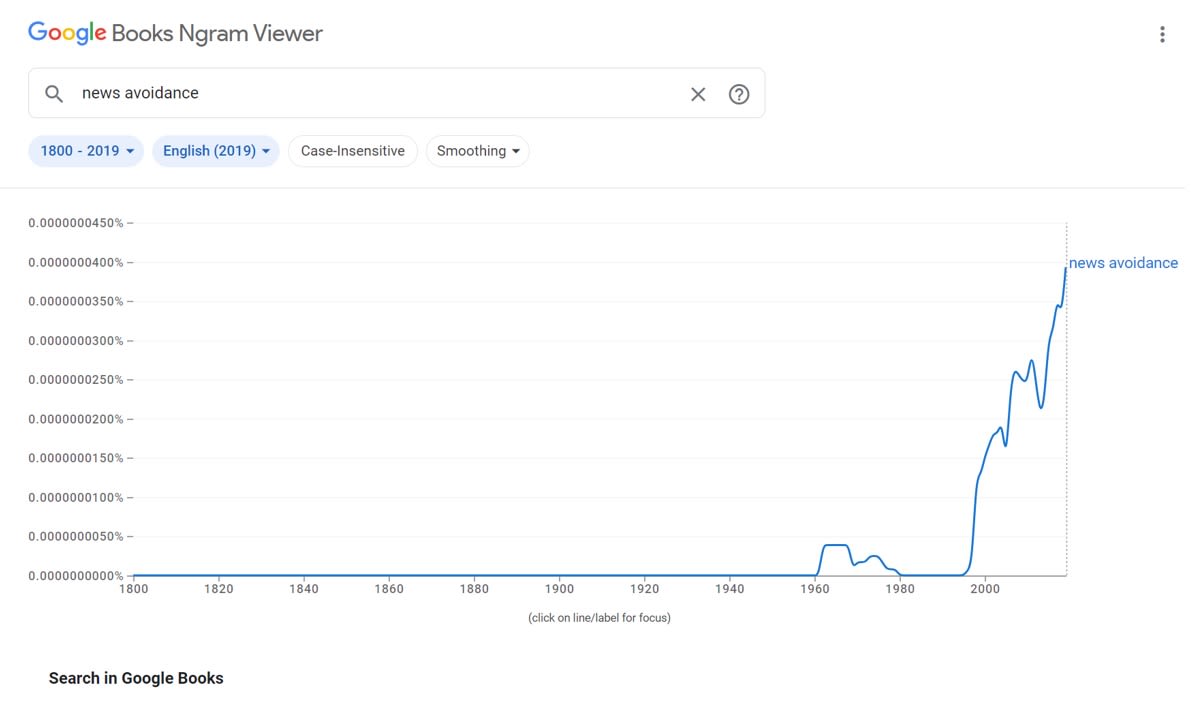
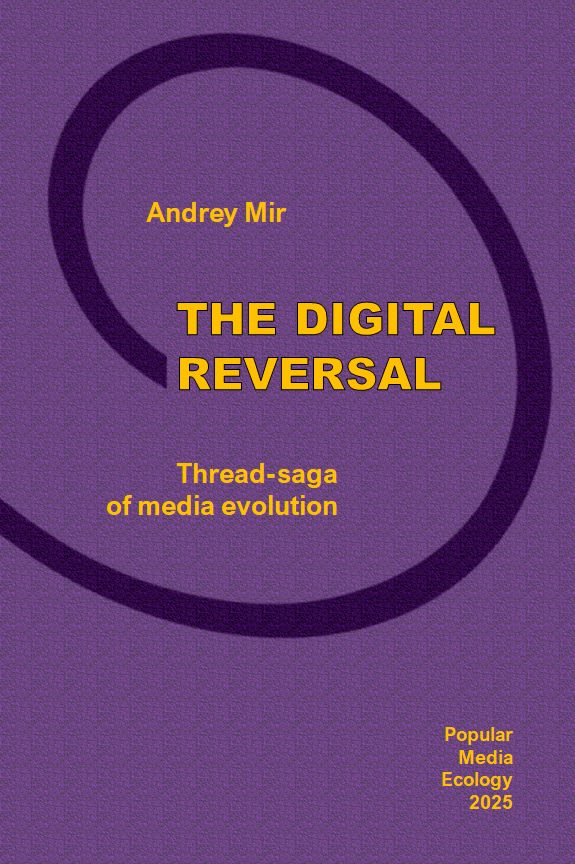
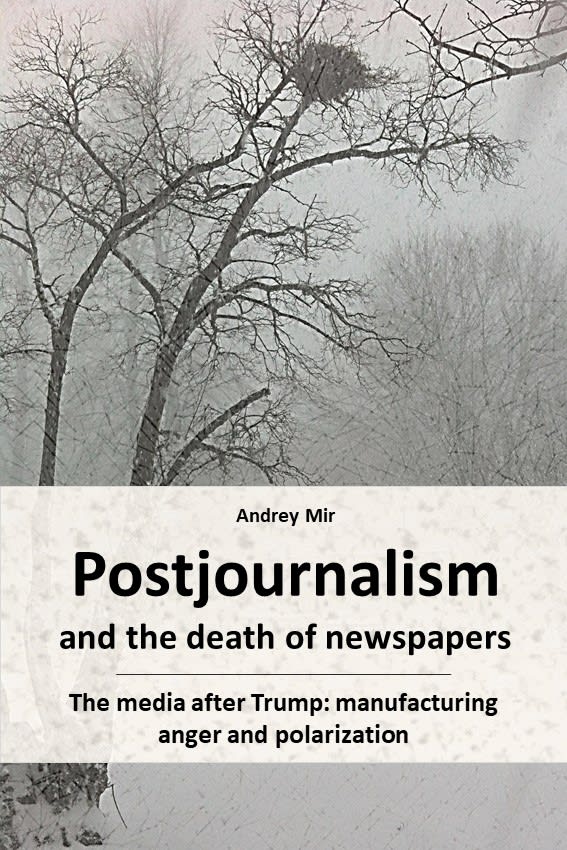
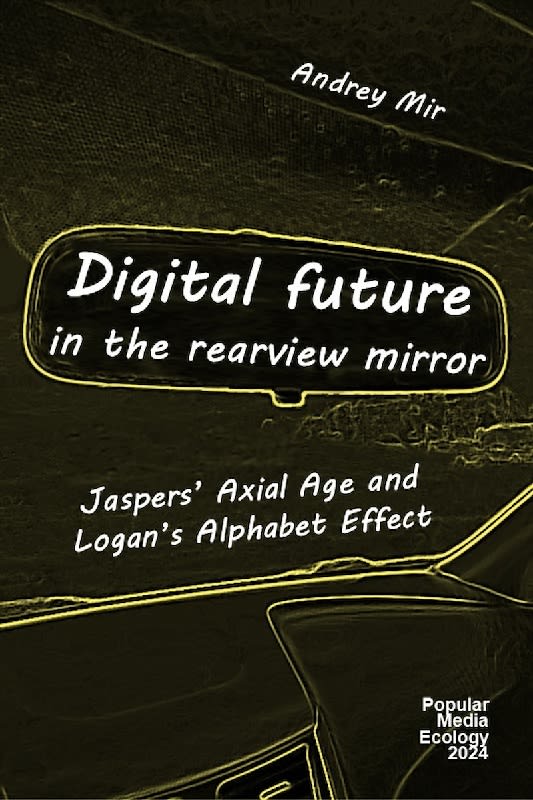
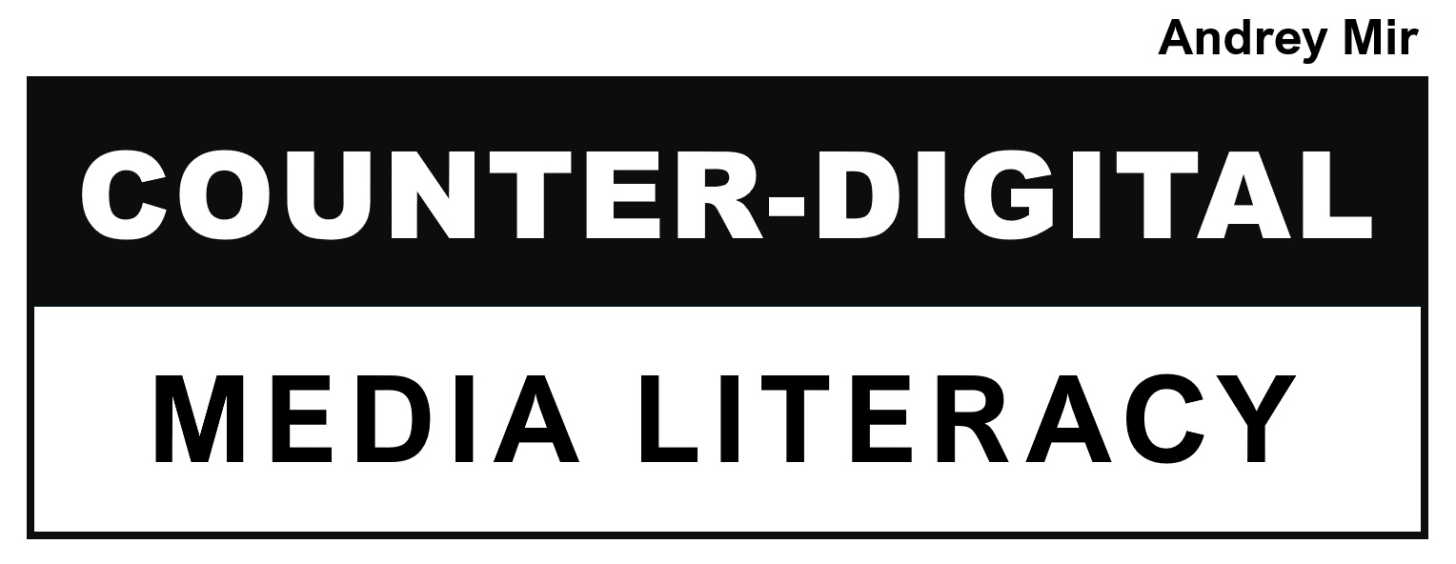



![Geometry and Physics of Wrinkling [pdf]](https://news.najib.digital/site/assets/img/broken.gif)
